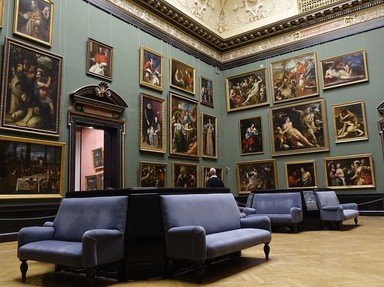Quiz Answer Key and Fun Facts
1. Can you name this Neoclassical painting by Jacques-Louis David?
2. Before you start thinking about an associated Coldplay album, can you identify the name of this Romantic Era painting by Eugène Delacroix?
3. Which artist painted "La Lecture?"
4. Which artist painted this Louvre painting, known as "La Belle Ferronnière"?
5. Which artist painted "The Coronation of Napoleon?"
6. What is the name of this painting, by Eugène Delacroix?
7. Can you identify the name of this painting?
8. What is the name of this portrait depicting a musical composer?
9. Can you identify the name of this painting by Jean-Antoine Watteau?
10. What is the name of this Louvre painting by Georges de La Tour?
Source: Author
dersteppenwolf
This quiz was reviewed by FunTrivia editor
looney_tunes before going online.
Any errors found in FunTrivia content are routinely corrected through our feedback system.
